
Martial arts have been around for centuries, and with that comes a rich history of weapons used in combat and training. Many people are familiar with weapons like nunchucks, swords, and bo staffs, but there are many other weapons that are just as badass, if not more so. In this post, we’ll be exploring the most badass martial arts weapons you’ve never heard of.
Kusarigama

The kusarigama is a Japanese weapon that consists of a sickle attached to a long chain with a weight on the other end. It was primarily used by ninja and other stealthy warriors during feudal Japan. The kusarigama was a very versatile weapon and could be used for a variety of purposes.
In combat, the kusarigama was used for both long-range and close-range attacks. The user could swing the chain and weight to create a defensive barrier or to attack from a distance. The sickle was used for close-range combat, and the user could slash, stab, or hook an opponent with it.
One of the key techniques used with the kusarigama is called “taijutsu”, which involves using footwork and body movements to evade an opponent’s attacks and to get into position for an attack. The kusarigama was also used in combination with other weapons, such as a sword or a shuriken, to create deadly and unpredictable combinations.
Outside of combat, the kusarigama was used as a tool for everyday life. It was used for farming and fishing, as well as for climbing and other outdoor activities. Its use as a tool allowed ninja and other stealthy warriors to conceal their true intentions and avoid suspicion.
Overall, the kusarigama was a very versatile weapon that could be used for a variety of purposes. Its use in combat required a great deal of skill and training, and its combination of long-range and close-range attacks made it a formidable weapon in the hands of a skilled practitioner.
Meteor Hammer
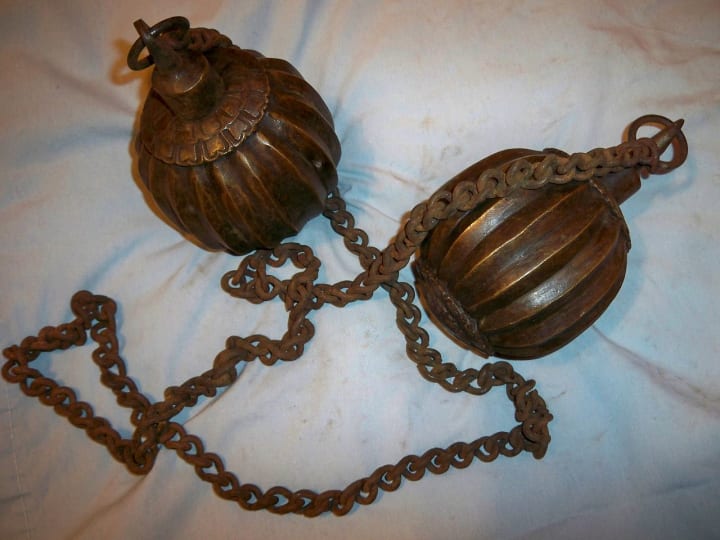
The meteor hammer is a Chinese weapon that consists of a metal weight on the end of a long rope or chain. It was primarily used as a long-range weapon and could be used for both offensive and defensive purposes.
In combat, the user would swing the weight in a circular motion, building up momentum before releasing it at the target. The weight could be used to strike an opponent from a distance, or to wrap around their weapon or body, immobilizing them. The long rope or chain also provided a defensive barrier that could be used to block or deflect incoming attacks.
One of the key techniques used with the meteor hammer is called “shansuo”, which involves using footwork and body movements to evade an opponent’s attacks while swinging the weapon in a circular motion. The user would then release the weight at the opportune moment to strike the target.
The meteor hammer could also be used in combination with other weapons, such as a staff or a sword, to create more versatile and deadly combinations. The weight could be used to distract or immobilize an opponent, while the other weapon was used to strike or finish them off.
Outside of combat, the meteor hammer was also used as a tool for farming and other activities. Its long reach and versatility made it a useful tool for harvesting and working in fields.
Overall, the meteor hammer was a very versatile weapon that required a great deal of skill and training to use effectively. Its long-range attacks and defensive capabilities made it a formidable weapon in the hands of a skilled practitioner.
Shobo
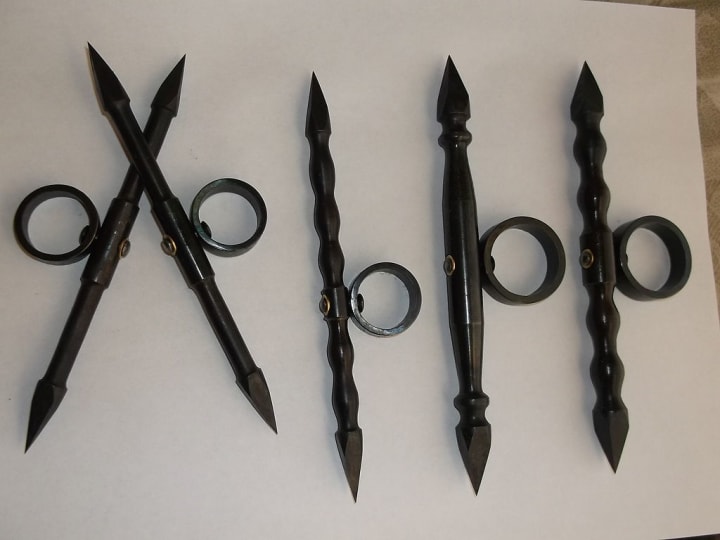
The shobo is a Japanese weapon that consists of a metal ring with a pointed tip. It was typically worn on the index or middle finger and used for both defensive and offensive purposes. The pointed tip of the ring could be used for stabbing or slashing, while the ring itself could be used for blocking and trapping an opponent’s weapon.
One of the main techniques used with the shobo is called “tegumi”, which is a grappling technique that involves grabbing an opponent’s weapon and disarming them. The shobo was also used in conjunction with other weapons, such as a sword or a staff, to create more versatile and deadly combinations.
In addition to its use in combat, the shobo was also used as a tool for everyday life. It was commonly used by farmers and fishermen to cut rope and other materials. It was also used by law enforcement officers as a non-lethal weapon for subduing criminals.
Overall, the shobo is a versatile weapon that can be used in a variety of situations. Its small size and concealability make it an ideal weapon for self-defense, while its pointed tip and defensive capabilities make it a formidable weapon in combat.
Manriki-Gusari
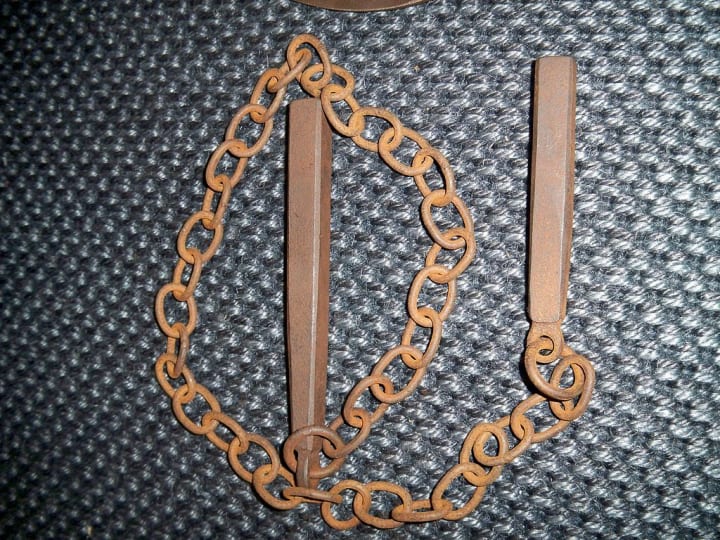
The Manriki-Gusari is a Japanese weapon that consists of a length of chain or rope with weights on each end. It was primarily used as a close-range weapon and could be used for both offensive and defensive purposes.
In combat, the user would hold one end of the chain or rope and swing the weights in a circular motion, building up momentum before releasing them at the target. The weights could be used to strike an opponent from a short distance, or to wrap around their weapon or body, immobilizing them. The chain or rope also provided a defensive barrier that could be used to block or deflect incoming attacks.
One of the key techniques used with the Manriki-Gusari is called “kakushi-buki”, which involves concealing the weapon in clothing or other objects before surprise attacking the opponent. The user could also use footwork and body movements to evade an opponent’s attacks while swinging the weapon in a circular motion.
The Manriki-Gusari could also be used in combination with other weapons, such as a sword or a staff, to create more versatile and deadly combinations. The user could use the chain or rope to distract or immobilize an opponent, while the other weapon was used to strike or finish them off.
Outside of combat, the Manriki-Gusari was also used as a tool for everyday life. Its long reach and versatile nature made it useful for a variety of tasks, such as carrying objects or restraining animals.
Overall, the Manriki-Gusari was a very versatile weapon that required a great deal of skill and training to use effectively. Its close-range attacks and defensive capabilities made it a formidable weapon in the hands of a skilled practitioner.
Tabak-Toyok
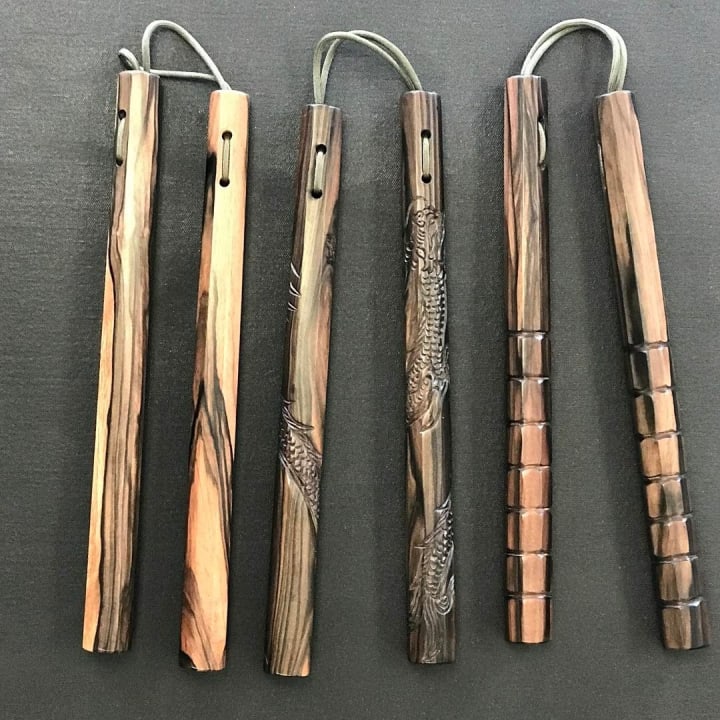
The Tabak-Toyok, also known as the “Sipa” or “Spatik” in the Philippines, is a traditional Filipino weapon that consists of a small, weighted ball attached to a string or cord. It was primarily used as a close-range weapon and could be used for both offensive and defensive purposes.
In combat, the user would swing the Tabak-Toyok in a circular motion, building up momentum before striking the target. The weighted ball could be used to strike an opponent from a close-range distance, or to create a defensive barrier that could be used to block or deflect incoming attacks.
One of the key techniques used with the Tabak-Toyok is called “Lihis”, which involves using footwork and body movements to evade an opponent’s attacks and to get into position for an attack. The user could also use the weapon to trap or entangle an opponent’s limbs, creating openings for an attack.
The Tabak-Toyok could also be used in combination with other weapons, such as a knife or a stick, to create more versatile and deadly combinations. The user could use the weapon to distract or immobilize an opponent, while the other weapon was used to strike or finish them off.
Outside of combat, the Tabak-Toyok was also used as a tool for everyday life. Its small size and weight made it useful for a variety of tasks, such as crushing nuts or grinding spices.
Overall, the Tabak-Toyok was a very versatile weapon that required a great deal of skill and training to use effectively. Its close-range attacks and defensive capabilities made it a formidable weapon in the hands of a skilled practitioner.
Kyoketsu Shoge
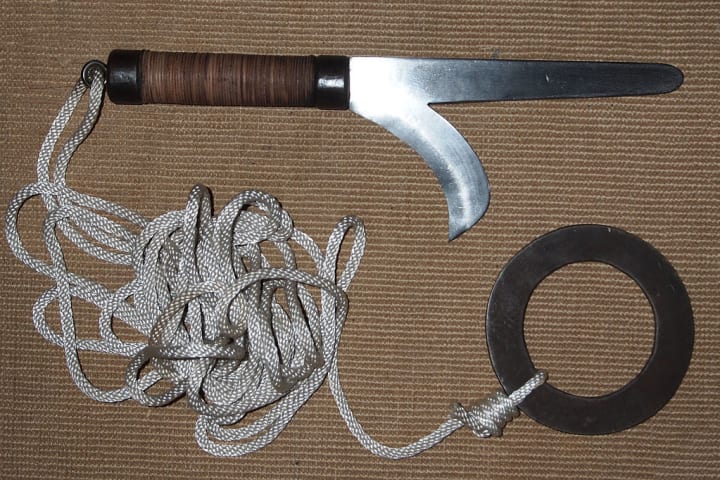
The Kyoketsu Shoge is a Japanese weapon that consists of a sharp blade attached to a rope or chain with a metal ring on the other end. It was primarily used as a mid-range weapon and could be used for both offensive and defensive purposes.
In combat, the user would hold the metal ring and swing the blade in a circular motion, building up momentum before releasing it at the target. The blade could be used to strike an opponent from a mid-range distance, or to wrap around their weapon or body, immobilizing them. The rope or chain also provided a defensive barrier that could be used to block or deflect incoming attacks.
One of the key techniques used with the Kyoketsu Shoge is called “taijutsu”, which involves using footwork and body movements to evade an opponent’s attacks and to get into position for an attack. The user could also use the blade to create traps or to entangle an opponent’s weapon, creating openings for an attack.
The Kyoketsu Shoge could also be used in combination with other weapons, such as a sword or a shuriken, to create more versatile and deadly combinations. The user could use the blade to distract or immobilize an opponent, while the other weapon was used to strike or finish them off.
Outside of combat, the Kyoketsu Shoge was also used as a tool for everyday life. Its sharp blade and versatile nature made it useful for a variety of tasks, such as cutting ropes or fishing lines.
Overall, the Kyoketsu Shoge was a very versatile weapon that required a great deal of skill and training to use effectively. Its mid-range attacks and defensive capabilities made it a formidable weapon in the hands of a skilled practitioner.
Tekko-Kagi
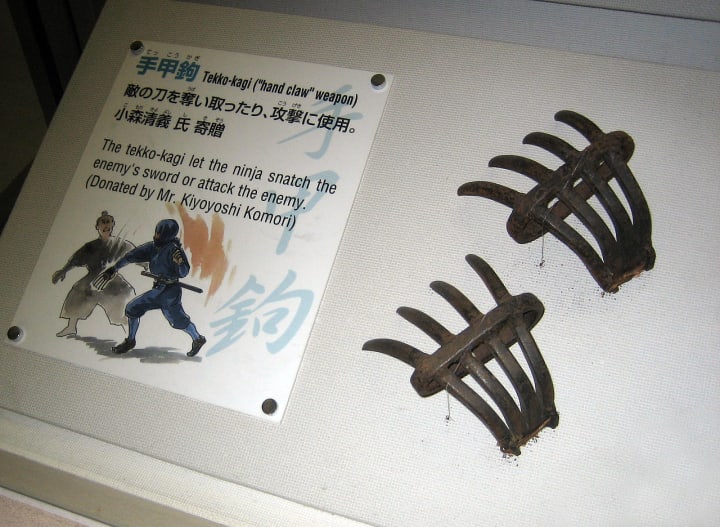
The Tekko-Kagi is a Japanese weapon that consists of a metal claw with a handle that is worn on the hand like a knuckleduster. It was primarily used as a close-range weapon and could be used for both offensive and defensive purposes.
In combat, the user would wear the Tekko-Kagi on one or both hands and use them to punch and claw at the opponent. The claws could be used to grab and tear at the opponent’s clothing, skin, or weapons. The user could also use the weapon defensively to block or deflect incoming attacks.
One of the key techniques used with the Tekko-Kagi is called “taijutsu”, which involves using footwork and body movements to evade an opponent’s attacks and to get into position for an attack. The user could also use the claws to create traps or to entangle an opponent’s weapon, creating openings for an attack.
The Tekko-Kagi could also be used in combination with other weapons, such as a sword or a staff, to create more versatile and deadly combinations. The user could use the claws to distract or immobilize an opponent, while the other weapon was used to strike or finish them off.
Outside of combat, the Tekko-Kagi was also used as a tool for everyday life. Its sharp claws made it useful for a variety of tasks, such as cutting ropes or digging in the ground.
Overall, the Tekko-Kagi was a very versatile weapon that required a great deal of skill and training to use effectively. Its close-range attacks and defensive capabilities made it a formidable weapon in the hands of a skilled practitioner.
Rope Dart
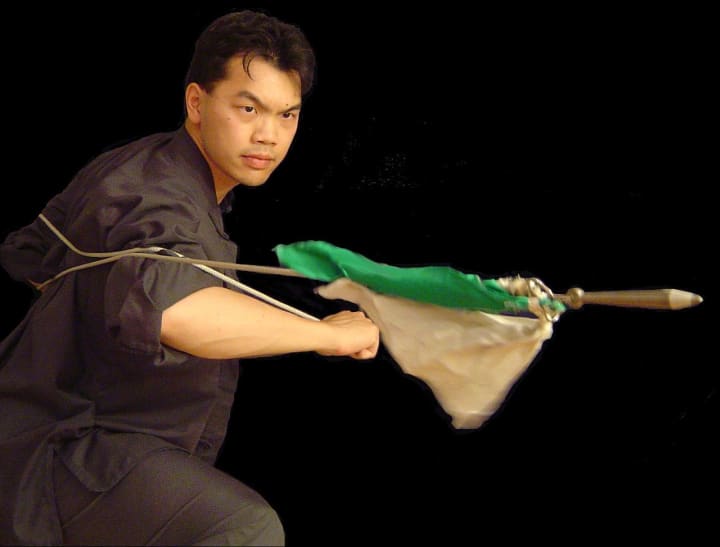
The Rope Dart, also known as the “Jie Dao” or “Shéng Biāo” in Chinese, is a traditional Chinese weapon that consists of a metal dart attached to a length of rope or chain. It was primarily used as a mid to long-range weapon and could be used for both offensive and defensive purposes.
In combat, the user would swing the Rope Dart in a circular motion, building up momentum before releasing it at the target. The dart could be used to strike an opponent from a mid to long-range distance, or to wrap around their weapon or body, immobilizing them. The user could also use the rope or chain to create a defensive barrier that could be used to block or deflect incoming attacks.
One of the key techniques used with the Rope Dart is called “Kuai Jiao”, which involves using footwork and body movements to evade an opponent’s attacks and to get into position for an attack. The user could also use the dart to create traps or to entangle an opponent’s weapon, creating openings for an attack.
The Rope Dart could also be used in combination with other weapons, such as a staff or a sword, to create more versatile and deadly combinations. The user could use the dart to distract or immobilize an opponent, while the other weapon was used to strike or finish them off.
Outside of combat, the Rope Dart was also used as a tool for everyday life. Its length of rope or chain made it useful for a variety of tasks, such as climbing or pulling objects.
Overall, the Rope Dart was a very versatile weapon that required a great deal of skill and training to use effectively. Its mid to long-range attacks and defensive capabilities made it a formidable weapon in the hands of a skilled practitioner.
Three-Section Staff
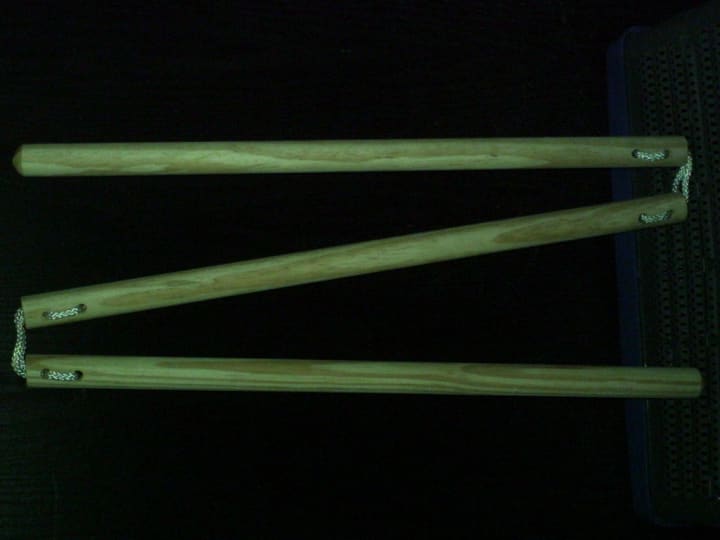
The Three-Section Staff, also known as the “Sanjiegun” in Chinese, is a traditional Chinese weapon that consists of three wooden or metal sections connected by chains or ropes. It was primarily used as a mid-range weapon and could be used for both offensive and defensive purposes.
In combat, the user would swing the Three-Section Staff in a circular motion, building up momentum before striking the target. The sections could be used to strike an opponent from a mid-range distance, or to create a defensive barrier that could be used to block or deflect incoming attacks.
One of the key techniques used with the Three-Section Staff is called “Jie Jiao”, which involves using footwork and body movements to evade an opponent’s attacks and to get into position for an attack. The user could also use the staff to create traps or to entangle an opponent’s weapon, creating openings for an attack.
The Three-Section Staff could also be used in combination with other weapons, such as a spear or a sword, to create more versatile and deadly combinations. The user could use the staff to distract or immobilize an opponent, while the other weapon was used to strike or finish them off.
Outside of combat, the Three-Section Staff was also used as a tool for everyday life. Its length and flexible sections made it useful for a variety of tasks, such as reaching objects or for balance support during difficult movements.
Overall, the Three-Section Staff was a very versatile weapon that required a great deal of skill and training to use effectively. Its mid-range attacks and defensive capabilities made it a formidable weapon in the hands of a skilled practitioner.
Jutte
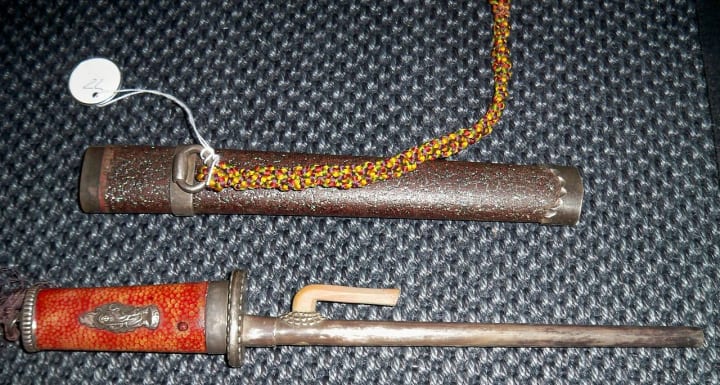
The jutte is a Japanese weapon that was used by law enforcement officers during the Edo period. It consists of a metal rod with a hook on one end and a pointed tip on the other. The hook was used to trap an opponent’s weapon, while the pointed tip was used for stabbing and striking.
The jutte was primarily used for non-lethal combat, and law enforcement officers were trained to disarm and subdue criminals without causing serious injury. They would use the hook to trap an opponent’s weapon and then strike with the pointed tip or the body of the jutte. The jutte was also used for blocking and parrying an opponent’s attacks.
One of the techniques used with the jutte is called “hojojutsu”, which is a form of restraining an opponent using rope. The jutte would be used to trap an opponent’s weapon, and then a rope would be used to tie them up.
The jutte was also used as a tool for everyday life, such as for opening doors and breaking locks. It was a symbol of authority and was often carried by high-ranking officials.
Overall, the jutte was a versatile weapon that could be used in both combat and non-combat situations. Its unique design made it an effective tool for disarming and subduing opponents without causing serious injury, and its use in law enforcement helped to maintain peace and order during the Edo period.
Conclusion
These are just a few examples of the many badass martial arts weapons that exist. While they may not be as well-known as some of the more popular weapons, they are just as deadly in the hands of a skilled practitioner. Whether you’re a martial arts enthusiast or just curious about the history of martial arts weapons, these are definitely worth learning about.
Fifth Degree is not just a sports wear store, but also provides valuable resources for fitness tips, improve life tips, personal development, healthy recipes and learning best martial arts for self defense on their website to help customers achieve their fitness goals and live a better life. Their sports wear and accessories are designed with a focus on quality, functionality, and style to complement your workout routine and enhance your fitness experience. Fifth Degree is committed to providing customers with the best possible products and resources to help them live a healthier lifestyle.






Comments
There are no comments for this story
Be the first to respond and start the conversation.